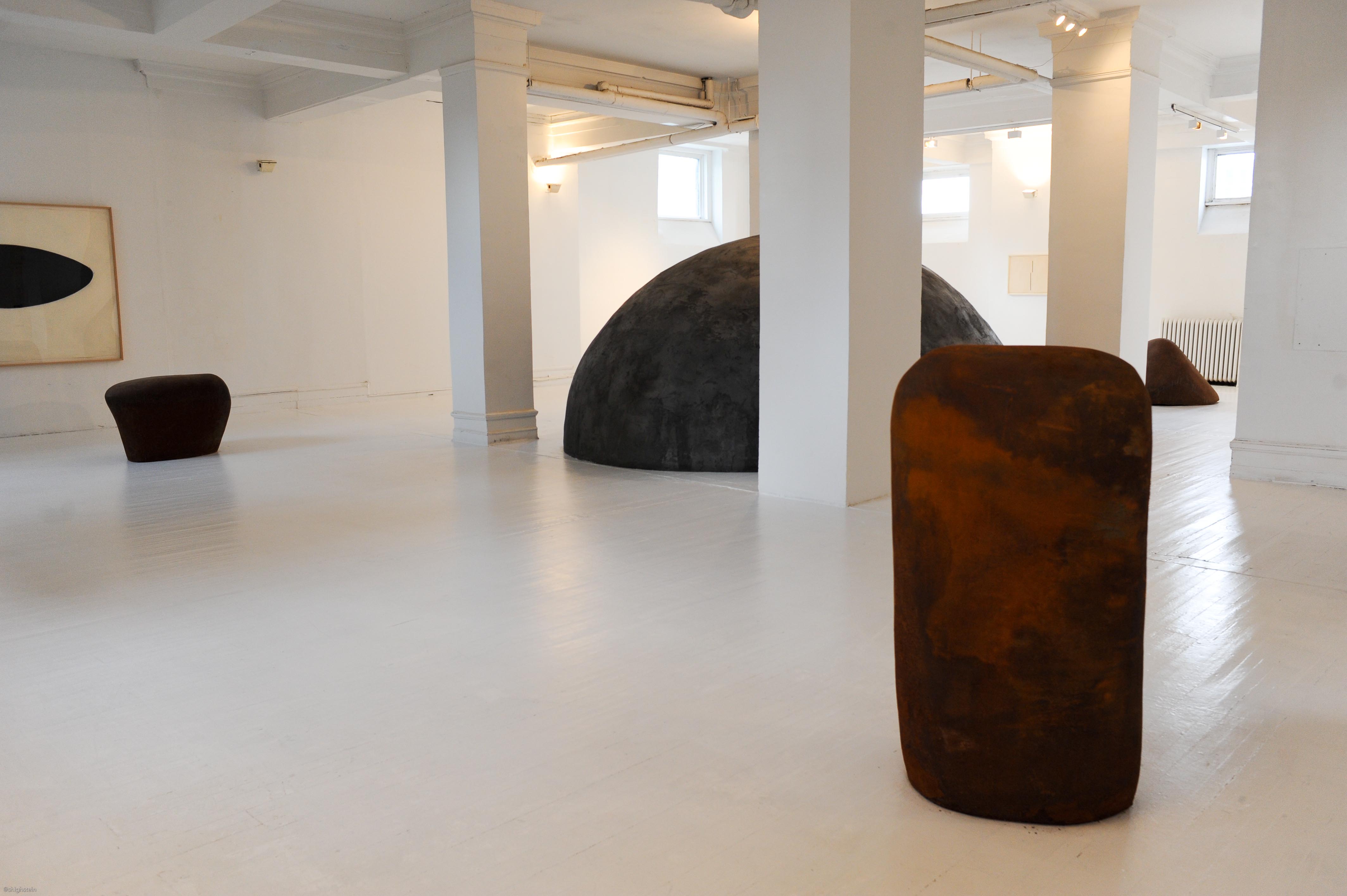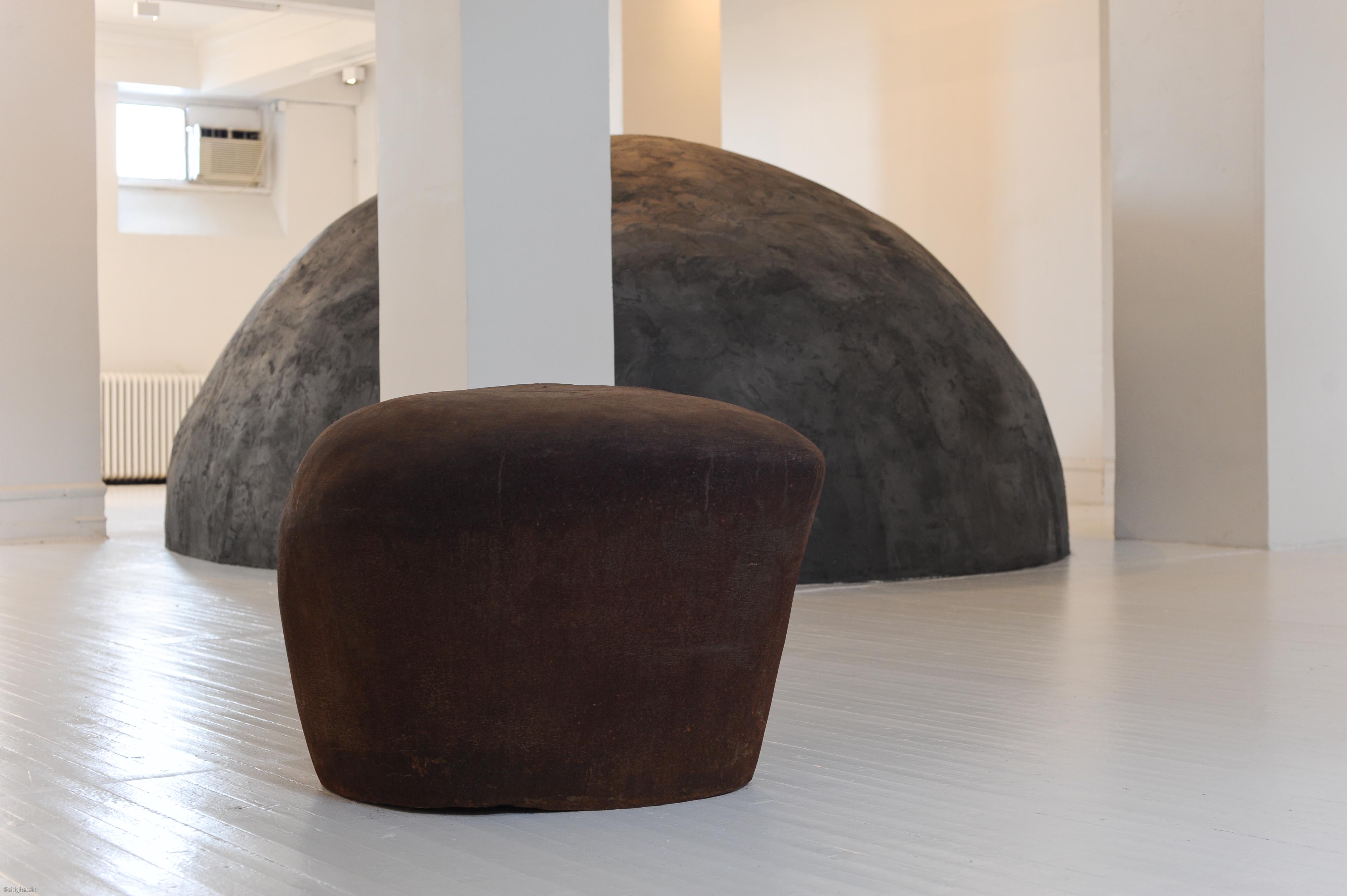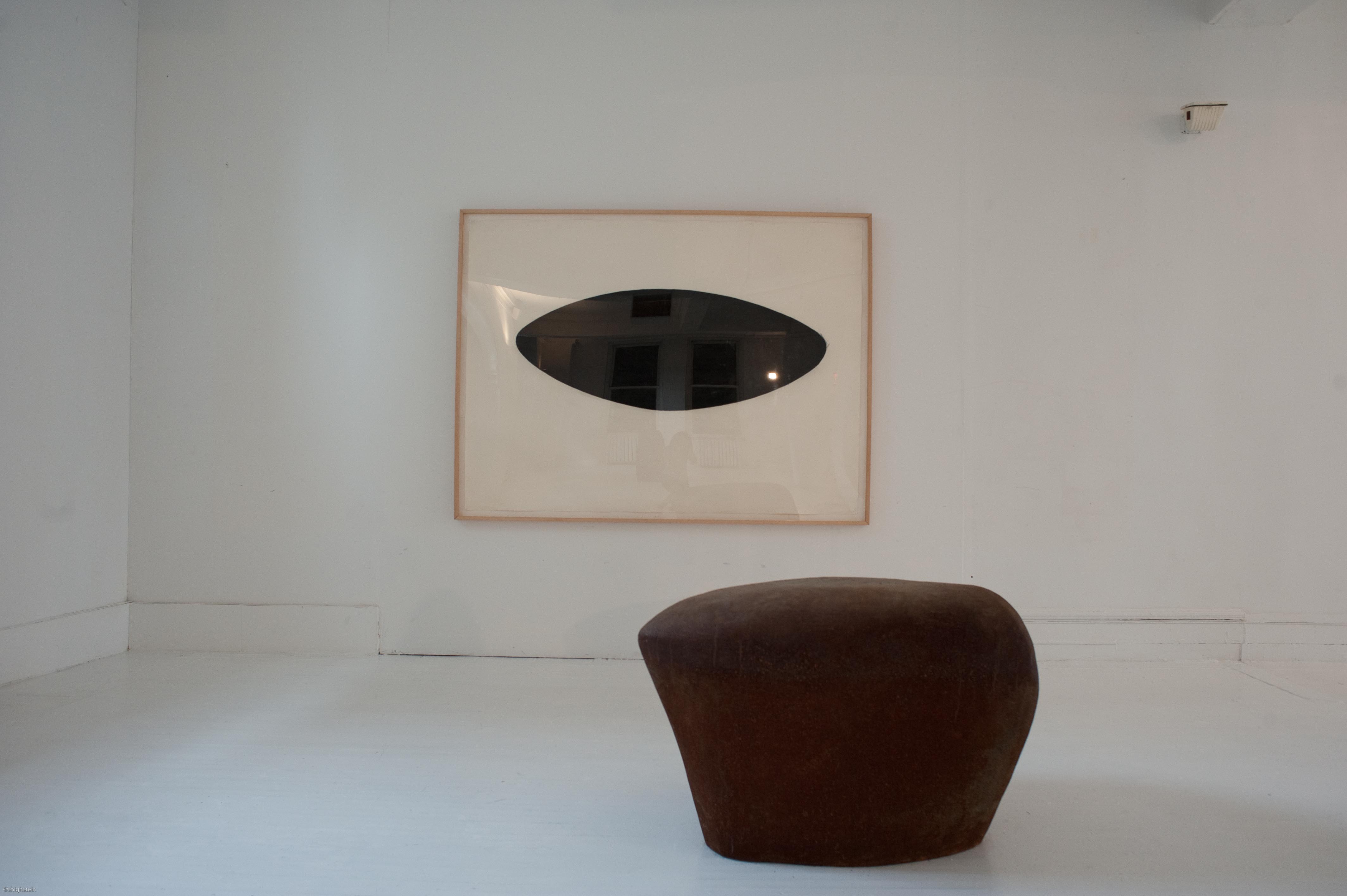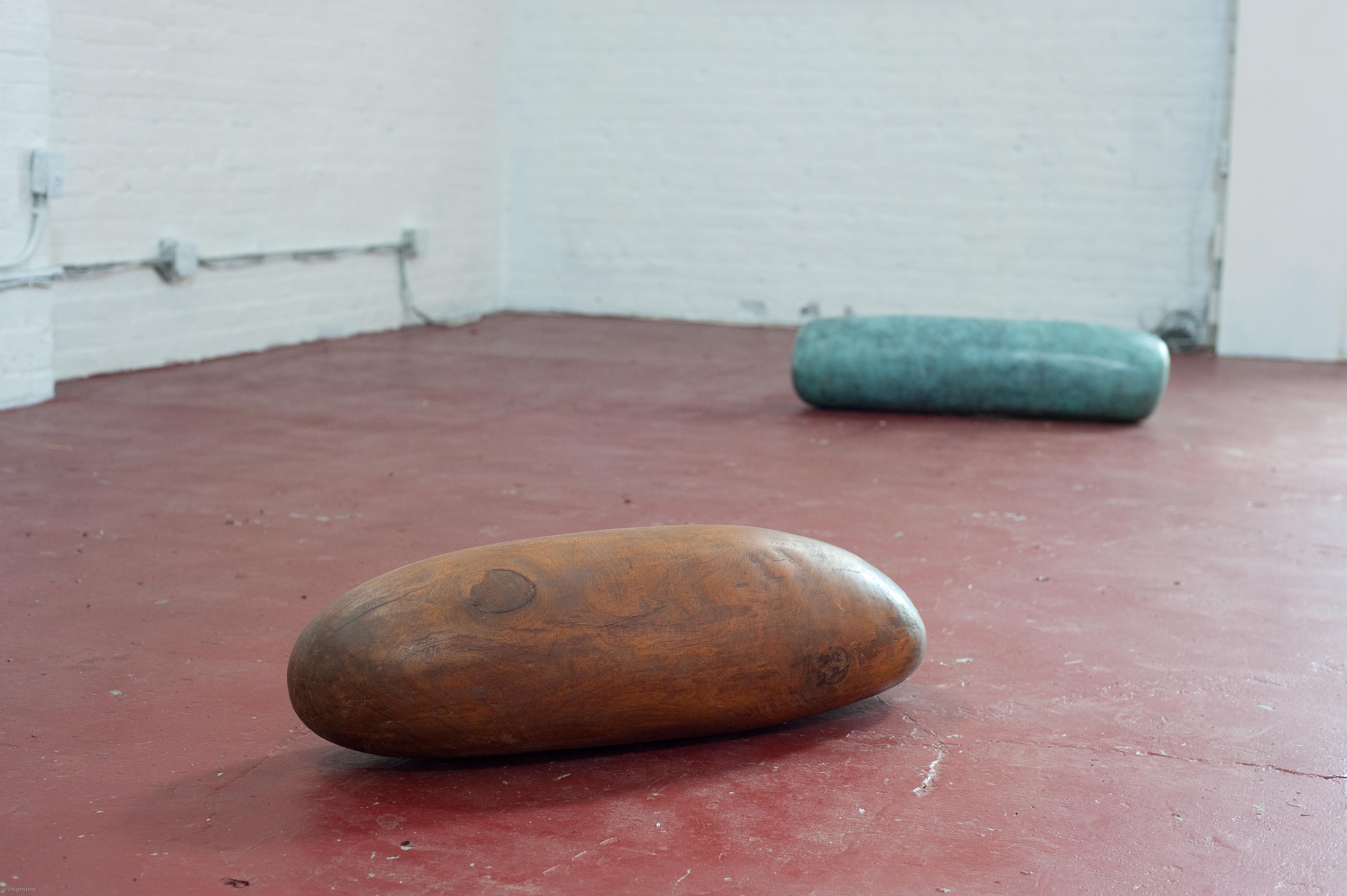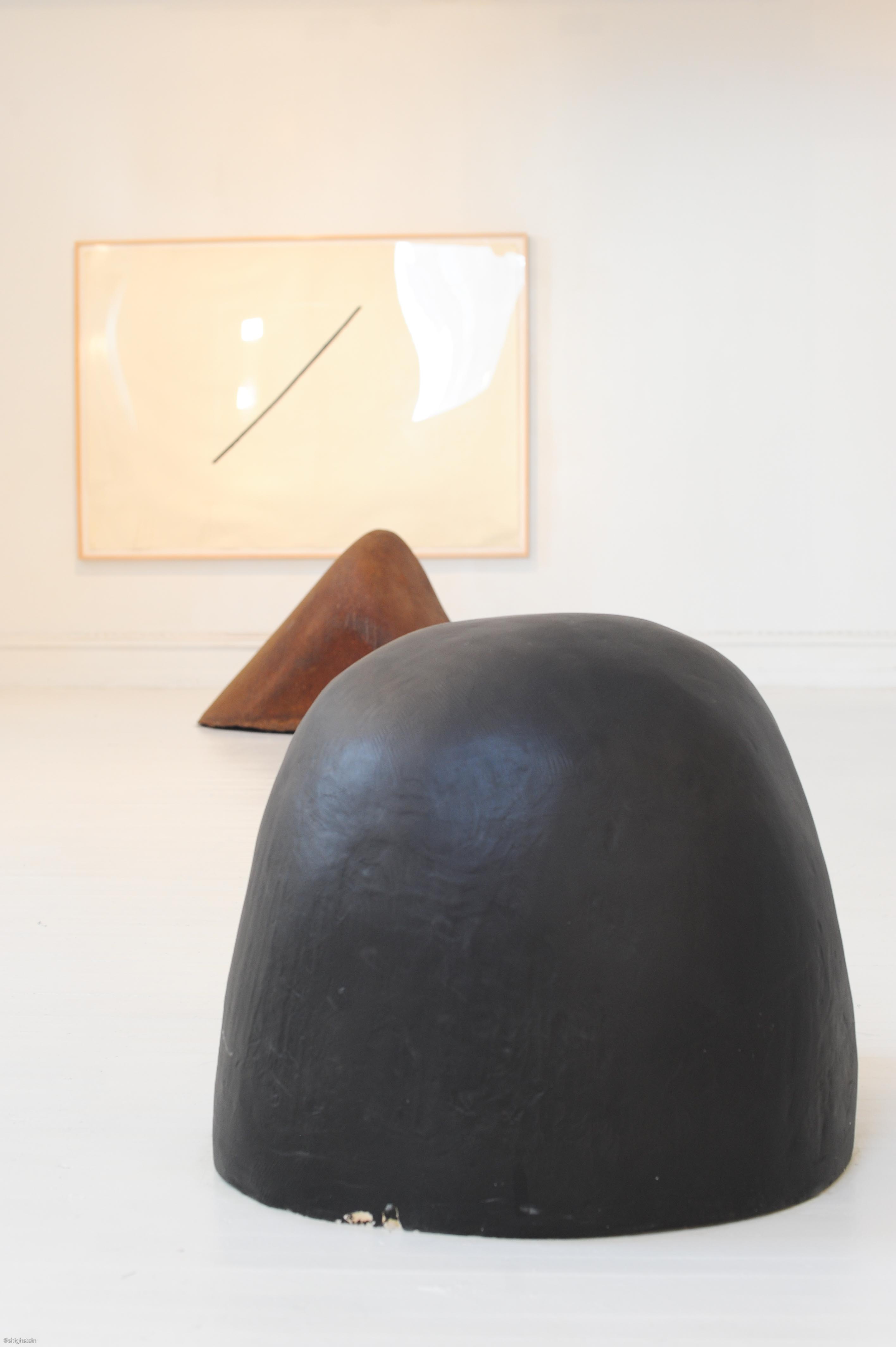Jene Highstein: Early Works
The Clocktower Gallery presents Jene Highstein: Early Works, an exhibition of sculpture and drawing by Jene Highstein (1942 – 2013). One of the first artists to present work at the Clocktower Gallery, in 1973, Highstein passed away April 27, 2013, at age 70, in Salem, NY.
Jene Highstein: Early Works focuses on a formative series of process-based, exploratory sculptural works from the early 1970’s, including the recreation of the large-scale Black Mound for Suzi, originally made for P.S.1 Contemporary Art Center’s 1976 inaugural exhibition, Rooms.
These early 1970’s works acted as a bridge between pure process pieces such as Richard Serra’s late 1960’s work, and later, more formal sculptural works by Highstein in the 1980’s. While Highstein’s 1980’s work moves towards more clearly defined forms using fabricated materials, his earlier body of work combines abstract shapes with raw, industrial materials and pure or geometrically rigorous measurements to create minimalist, transitional, carefully sited formations.
The exhibition is on view beginning Tuesday June 18th through August, from Tuesday through Friday, 12pm to 5pm, or by appointment, as well as during evening events at the gallery.
-------------------
Notes by Alanna Heiss, Clocktower Gallery Founder and Director:
Jene Highstein is a sculptor who, like his peers and friends Richard Nonas, Bob Grosvenor, and Gordon Matta-Clark, among others, emerged in the early 1970’s on a landscape in New York populated by powerful sculptors a few years older – Richard Serra, Keith Sonnier, Donald Judd, and Dan Flavin. Sharing many of their minimalist concerns, the new sculptors were however free men and women who were not wearied by the intellectual demands of the fight with Abstract Expressionism and Pop Art, and were filled with a newer sense of adventure in materials, process, and occasionally romantic relationships with landscape and architecture.
Highstein’s early work in New York depended on large and brutal manipulations of common building materials such as giant pipes, concrete, and plywood. Brought to location in Soho and Tribeca in big pick up trucks and maneuvered into place with old fashioned rope rigging, the placements were daring: such shows depended on close circles of friends and trusted allies.
The works presented at the Clocktower are those of a young man, one of the group of artists who built the radical art spaces of the 1970’s with their ideas and strength.
-------------------






